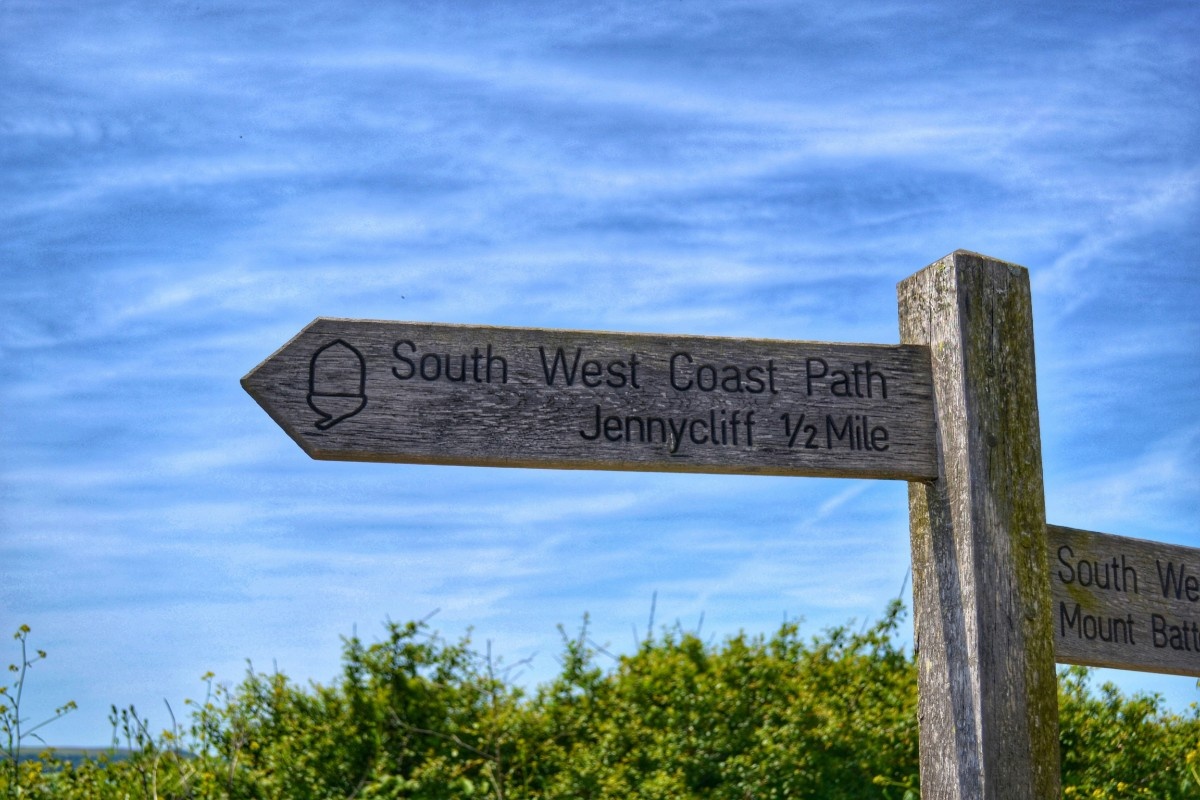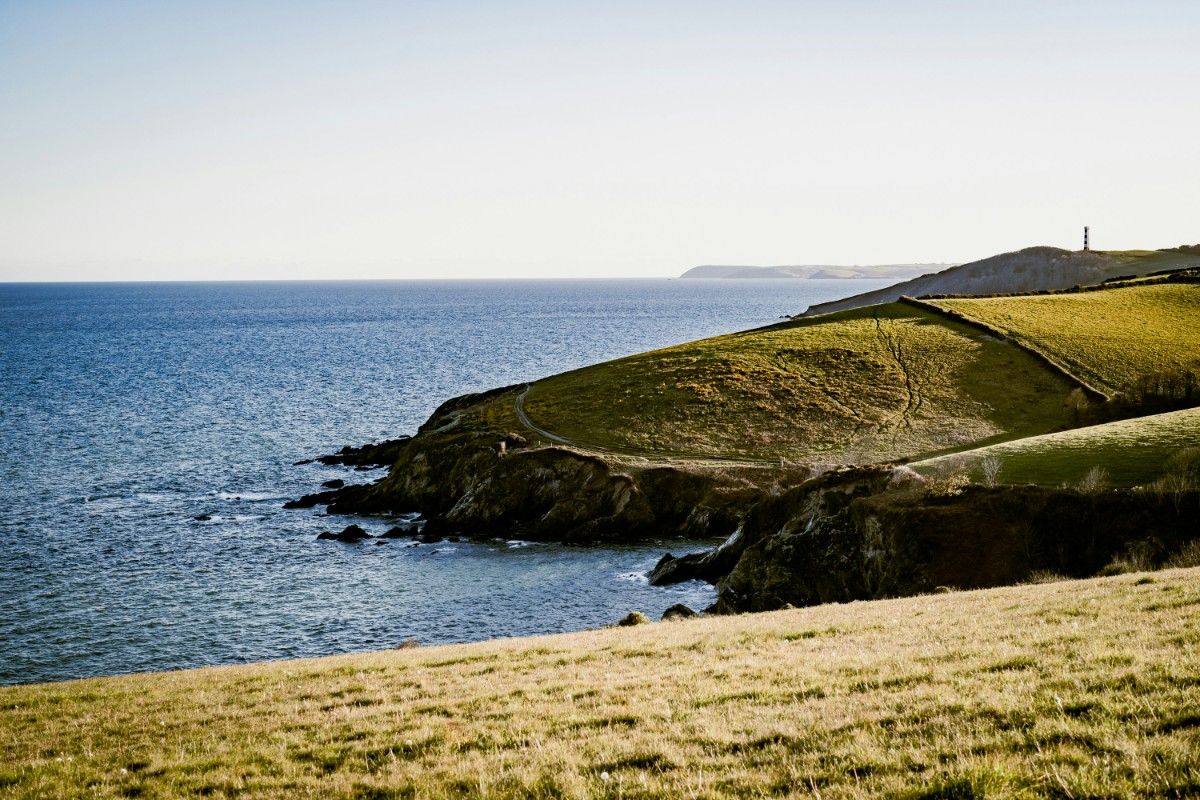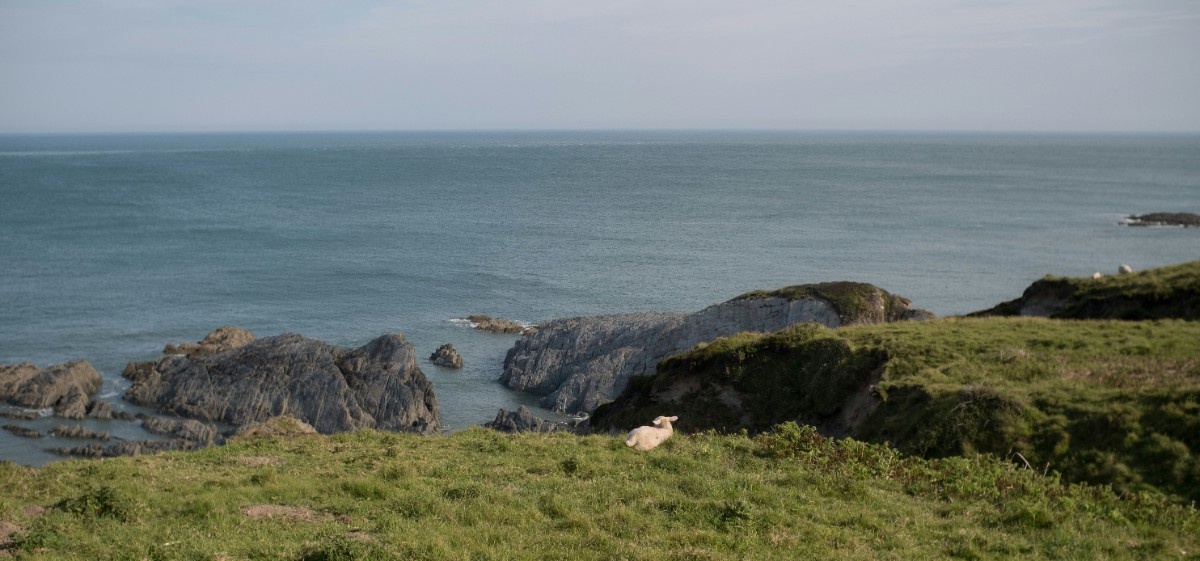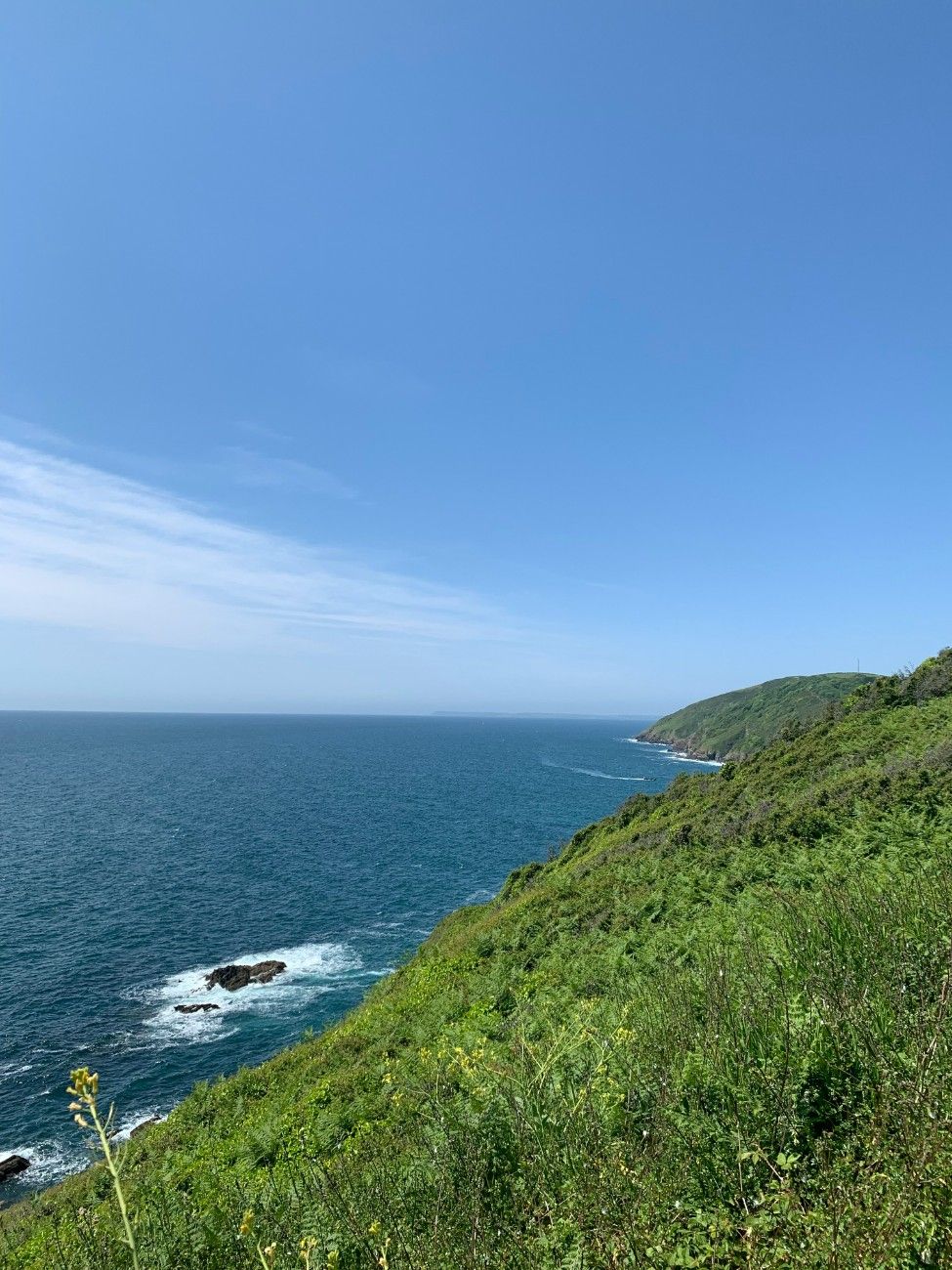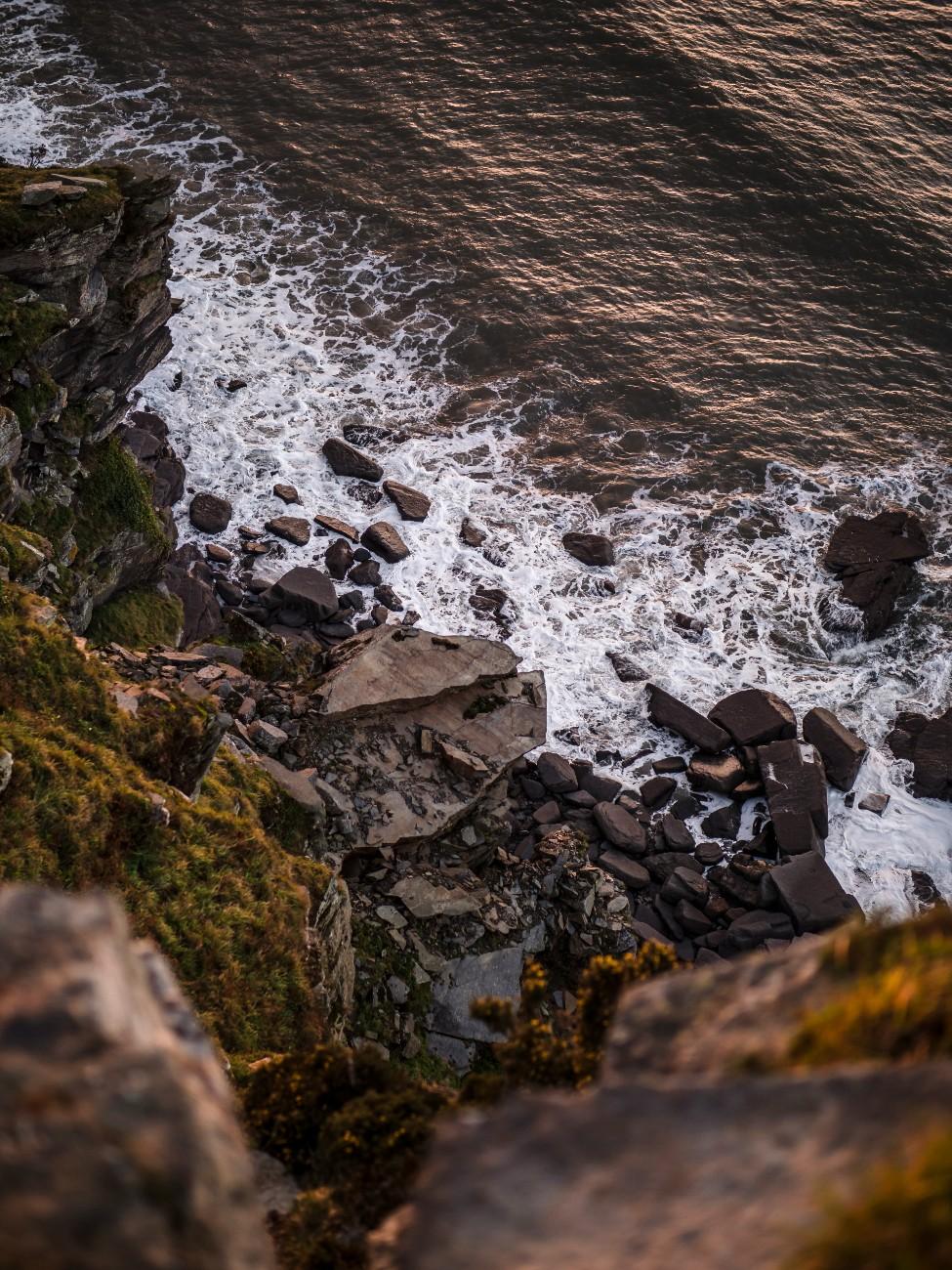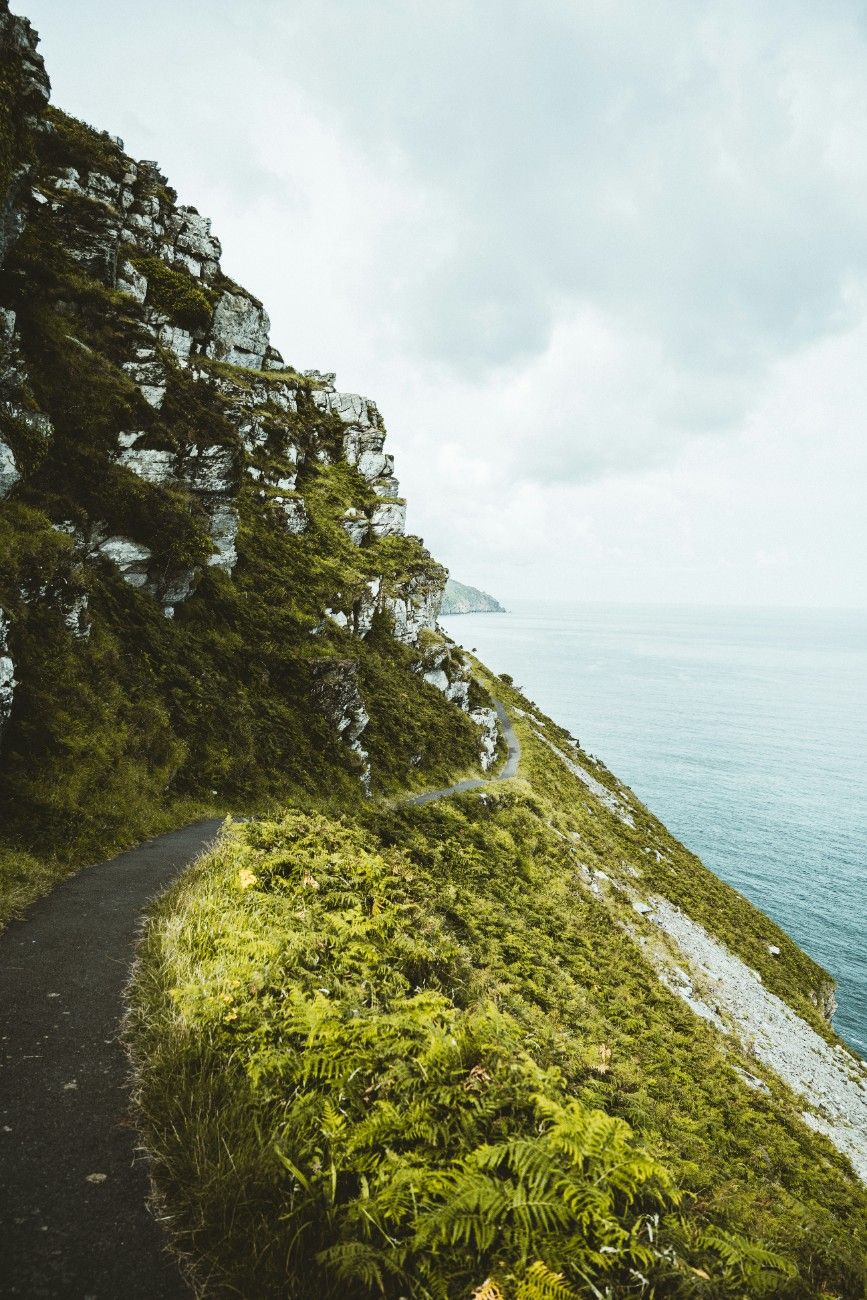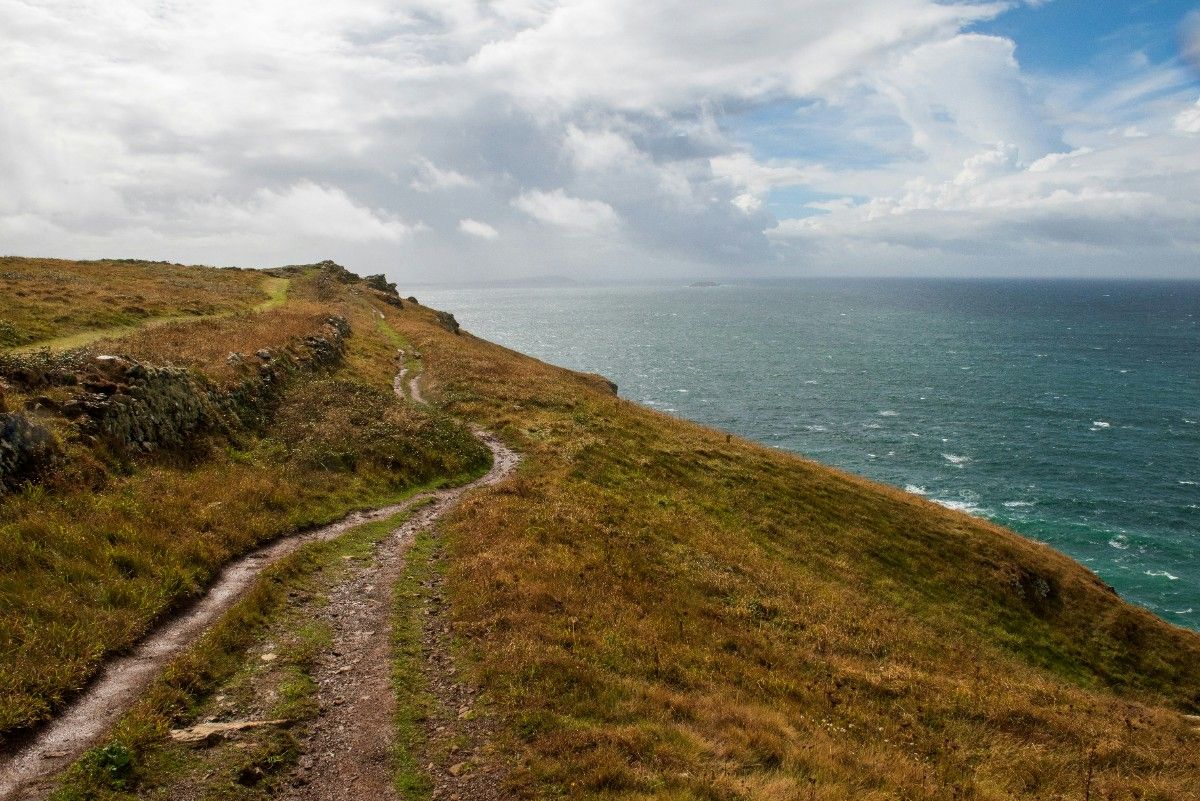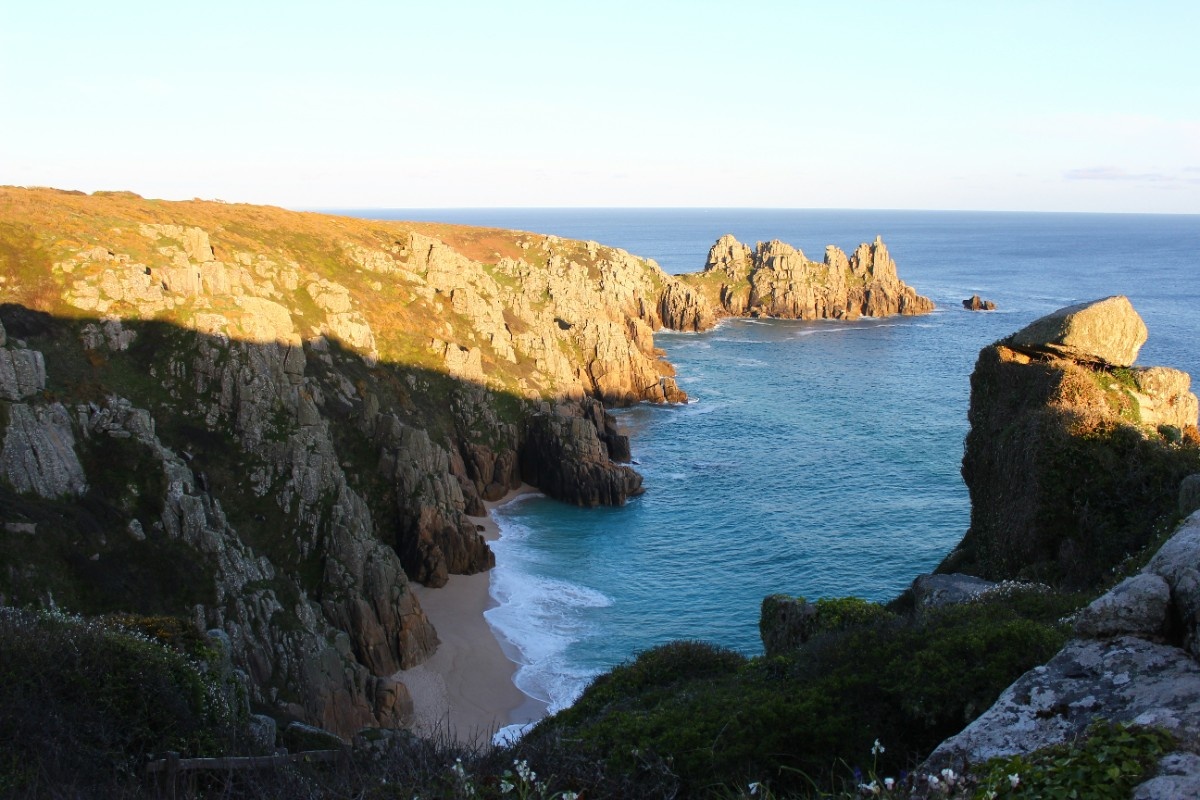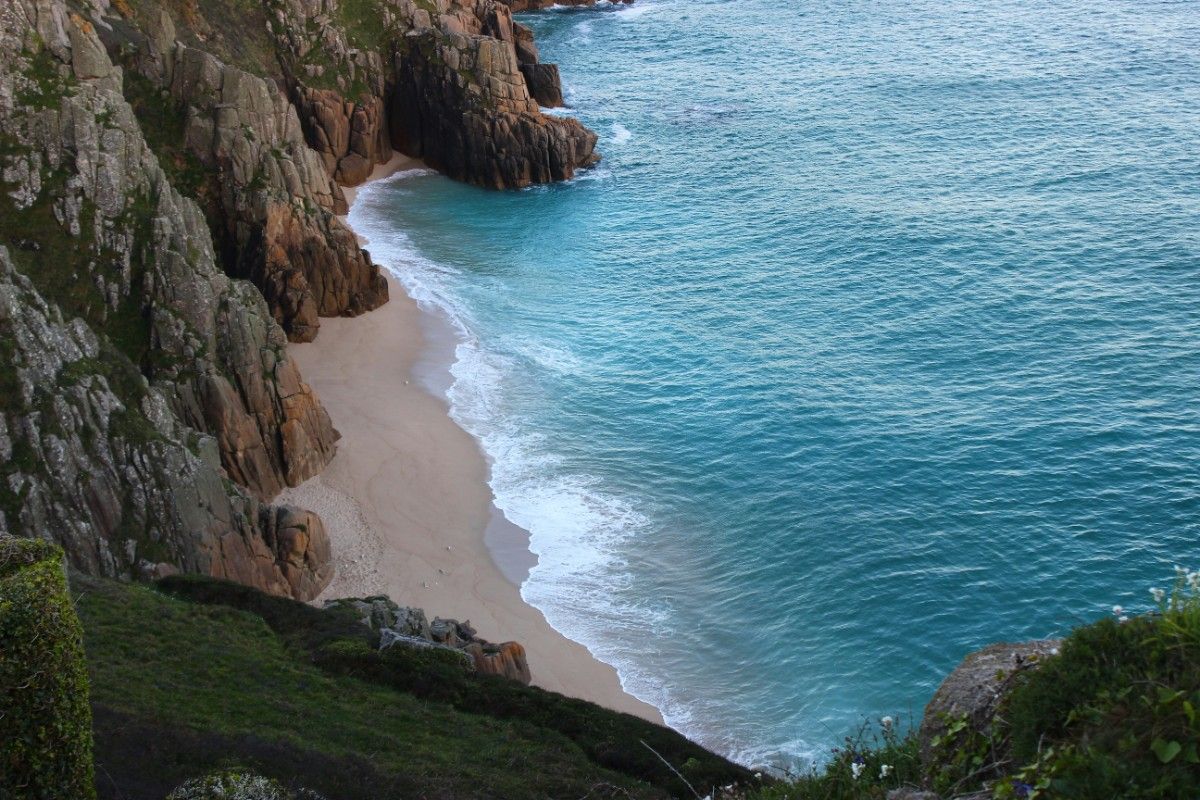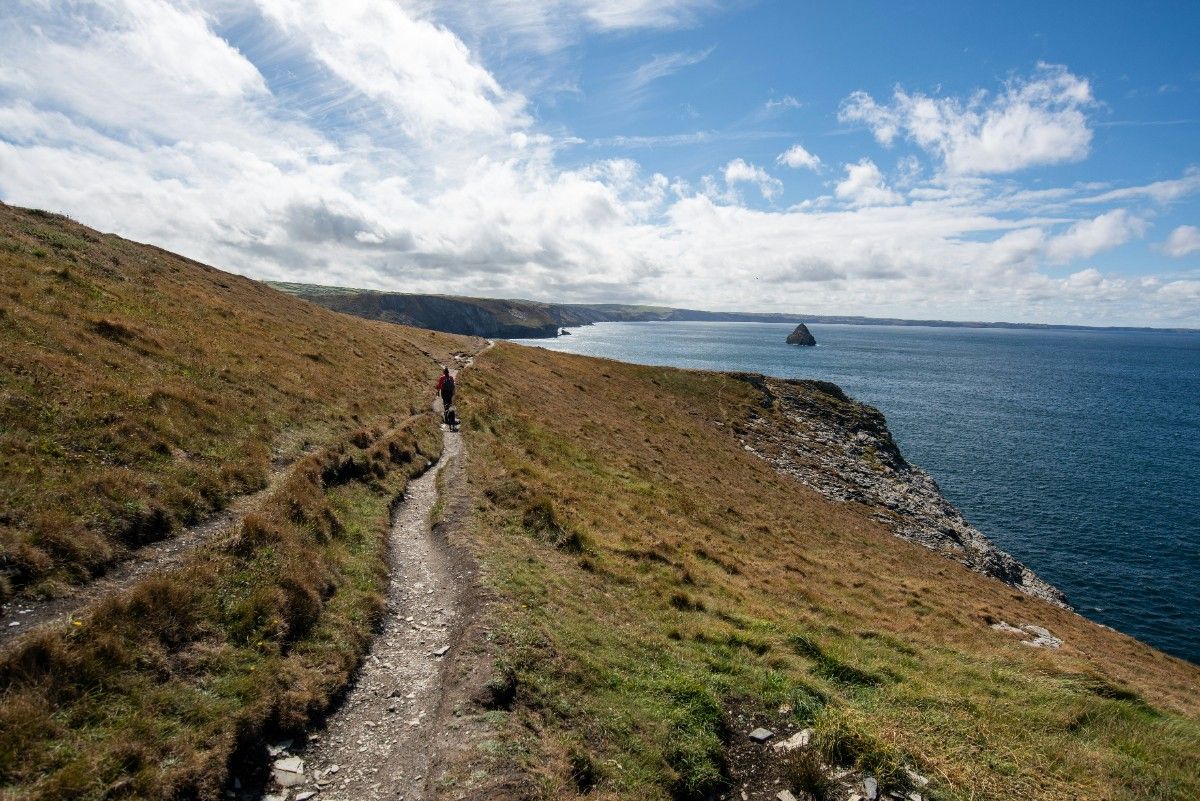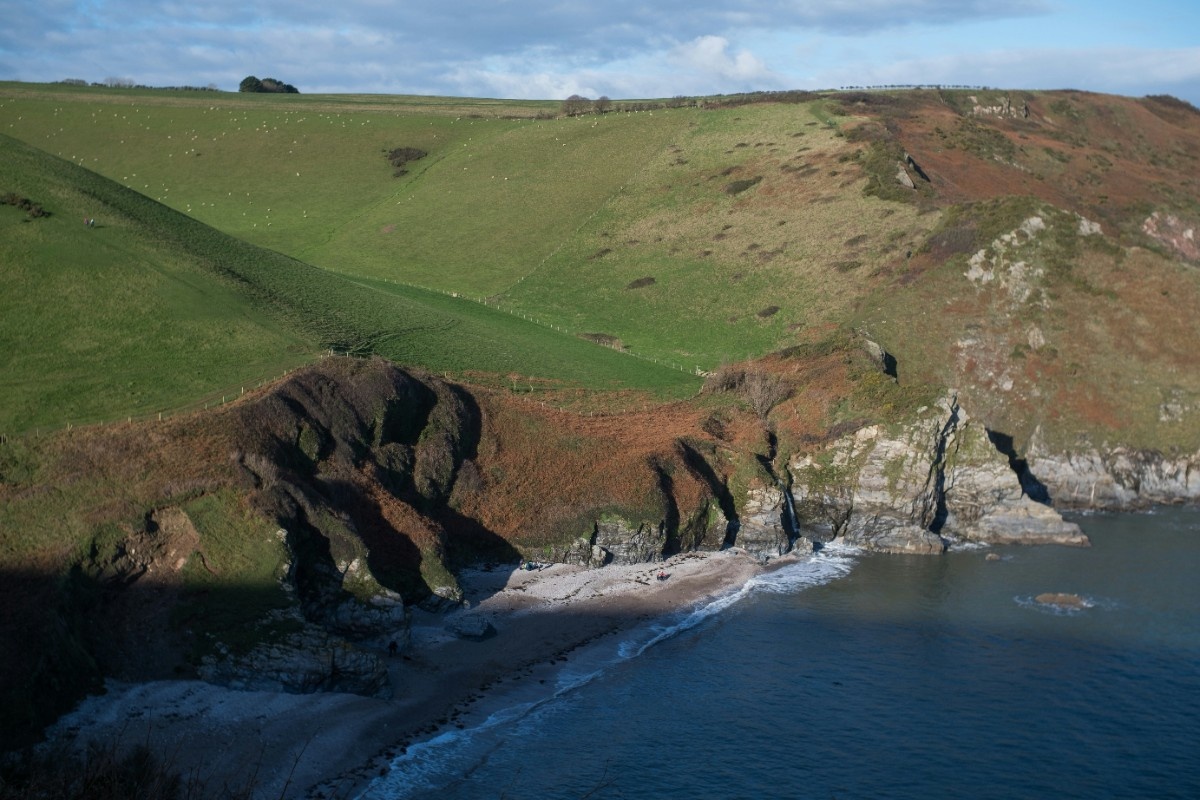Discovering the Wonders of the South West Coast Path
A Journey Through Breathtaking Landscapes
The South West Coast Path is a true gem for outdoor enthusiasts and nature lovers. Stretching for 630 miles (1,014 kilometres) along the stunning coastline of southwest England, this trail takes you through an incredible variety of landscapes. From rugged cliffs and golden beaches to charming fishing villages and lush countryside, the South West Coast Path offers a feast for the senses. As you walk along the path, you'll be treated to breathtaking views of the Atlantic Ocean, with its crashing waves and ever-changing hues. You'll also have the chance to explore hidden coves, spot wildlife, and discover the unique character of each section of the trail.
One of the highlights of the South West Coast Path is the sheer diversity of the landscapes you'll encounter. In the north, you'll start your journey in the rolling hills of Somerset, before heading into the dramatic scenery of Exmoor National Park. Here, you'll find the Valley of Rocks, a stunning geological formation near the village of Lynton. As you continue south, you'll pass through the picturesque towns and villages of Devon, with their thatched cottages and cosy pubs. You'll also have the chance to explore the rugged beauty of Dartmoor National Park, with its wild ponies and ancient stone circles.
As you enter Cornwall, the landscape becomes even more dramatic, with towering cliffs and secluded beaches. You'll pass through the charming town of Brixham, with its colourful harbour and historic fishermen's cottages. Further south, you'll discover the turquoise waters and white sands of Pedn Vounder Beach, a hidden gem near the village of St. Levan. Finally, you'll reach the westernmost point of England at Land's End, before turning east and heading along the more gentle coastline of south Cornwall and Devon.
Immersing Yourself in Nature
One of the great joys of hiking the South West Coast Path is the opportunity to immerse yourself in nature. As you walk along the trail, you'll be surrounded by the sights, sounds, and smells of the natural world. You'll hear the cry of seabirds and the crash of waves against the shore, and smell the salt air and the fragrant wildflowers that line the path. You'll also have the chance to spot a wide variety of wildlife, from playful seals and dolphins to rare butterflies and birds.
The South West Coast Path is home to an incredible array of flora and fauna, thanks to its diverse range of habitats. In the spring and summer, the cliff tops are carpeted with wildflowers, including the vibrant pink thrift and the delicate white sea campion. In the autumn, the hedgerows are filled with blackberries and sloes, while the winter brings flocks of migratory birds to the coast. As you walk along the path, keep your eyes peeled for some of the more unusual species that call this area home, such as the rare Dartford warbler or the elusive otter.
Of course, one of the most iconic wildlife sights along the South West Coast Path is the Atlantic grey seal. These curious creatures can often be spotted basking on the rocks or playing in the waves, and are a true highlight of any walk along the trail. If you're lucky, you may also spot pods of dolphins or even the occasional basking shark, which can grow up to 10 metres in length.
In addition to the wildlife, the South West Coast Path also offers the chance to connect with the natural elements in a more visceral way. Whether you're feeling the wind in your hair as you walk along a cliff top, or the sun on your face as you rest on a sandy beach, the trail provides a true sense of being at one with nature. So why not take a break from the stresses of modern life and immerse yourself in the beauty of the southwest coast?
Planning Your South West Coast Path Adventure
Choosing Your Route
Before setting out on your South West Coast Path adventure, it's important to take some time to plan your route. With 630 miles of trail to choose from, there are endless possibilities for creating your perfect itinerary. Whether you're looking for a short day hike or a multi-week expedition, the South West Coast Path has something to offer.
One of the first things to consider when planning your route is the level of difficulty. The South West Coast Path is a challenging trail, with plenty of steep ascents and descents, as well as some rocky and uneven terrain. However, the path is well-maintained and clearly signposted, making it accessible to hikers of all abilities. If you're new to hiking or have limited mobility, you may want to start with some of the gentler sections of the trail, such as the Exmoor coast or the south Devon coastline.
If you're planning a longer hike, you'll also need to consider the logistics of your journey. The South West Coast Path is divided into 52 stages, each of which covers around 12 miles (19 kilometres) of trail. You can choose to walk one or more stages at a time, depending on your schedule and fitness level. To help plan your route, there are plenty of resources available, including the official South West Coast Path map and the South West Coast Path distance calculator. These tools can help you estimate the time and distance of each stage, as well as the location of amenities such as accommodation, food, and water.
Another important factor to consider when planning your route is the time of year. The South West Coast Path is a year-round trail, but the weather can vary significantly depending on the season. In the summer months, the path can be busy with tourists and the weather can be hot and humid. In the winter, the trail is quieter but the weather can be cold, wet, and windy. Spring and autumn are often the best times to walk the path, with mild temperatures and fewer crowds.
What to Pack
Once you've planned your route, it's time to start thinking about what to pack. The key to a successful South West Coast Path adventure is to pack light but be prepared for all eventualities. Here are some essential items to consider:
- Sturdy hiking boots with good ankle support
- Comfortable, breathable clothing suitable for the season
- Waterproof jacket and trousers
- Hat, gloves, and warm layers for cooler weather
- Sun hat, sunglasses, and sunscreen for hot weather
- First aid kit, including blister plasters and insect repellent
- Map, compass, and GPS device (or smartphone with offline maps)
- Plenty of water and snacks, as well as a refillable water bottle
- Lightweight camping gear if you plan to camp along the trail
In addition to these essentials, there are a few other items that can make your South West Coast Path adventure more enjoyable. A camera or binoculars can help you capture the stunning scenery and wildlife along the trail, while a journal or sketchbook can provide a creative outlet during your downtime. If you're planning to stay in accommodation along the way, you may also want to pack a change of clothes and some basic toiletries.
When packing for your hike, it's important to keep the weight of your backpack to a minimum. Aim to carry no more than 10-15% of your body weight, and distribute the weight evenly across your shoulders and hips. If you're planning a longer hike, you may also want to consider using a luggage transfer service to transport your belongings between accommodations.
By taking the time to plan your route and pack carefully, you'll be well-prepared for your South West Coast Path adventure. So why not grab your boots and hit the trail? With its stunning scenery, rich history, and endless opportunities for adventure, the South West Coast Path is a truly unforgettable hiking experience.
Exploring the Stunning Scenery of the South West Coast Path
The Dramatic Coastline
The South West Coast Path is renowned for its breathtaking coastal scenery, which is among the most spectacular in the world. As you walk along the path, you'll be treated to an endless array of stunning vistas, from the rugged cliffs and hidden coves of the north Devon coast to the golden beaches and turquoise waters of Cornwall.
One of the most dramatic sections of the trail is the Valley of Rocks near Lynton in north Devon. This otherworldly landscape features towering cliffs, jagged rock formations, and a herd of wild goats that roam freely among the crags. As you walk along the cliff tops, you'll be treated to panoramic views of the Bristol Channel and the Welsh coast beyond.
Further south, the path passes through the charming fishing town of Brixham in Devon, with its colourful harbour and historic fishermen's cottages. From here, the trail winds its way along the rugged coastline, offering stunning views of the English Channel and the famous Torbay area, known as the "English Riviera".
As you enter Cornwall, the scenery becomes even more dramatic, with towering cliffs, hidden beaches, and picturesque fishing villages. One of the highlights of this section is Pedn Vounder Beach near St. Levan, a secluded cove with crystal-clear waters and white sands that can only be accessed by foot.
Diverse Landscapes
While the coastal scenery is undoubtedly the star of the show, the South West Coast Path also takes you through a diverse range of landscapes, from lush woodlands and rolling hills to windswept moors and tranquil estuaries.
In Somerset, the path passes through the stunning Exmoor National Park, with its ancient oak woodlands, bubbling streams, and wild ponies. Here, you'll have the chance to explore the picturesque villages of Porlock and Lynmouth, as well as the historic Dunster Castle.
As you move into Devon, the landscape becomes more varied, with a mix of rugged coastline, rolling farmland, and wild moorland. The trail takes you through the heart of Dartmoor National Park, with its granite tors, babbling brooks, and ancient stone circles. You'll also pass through the charming towns of Salcombe and Dartmouth, with their pretty harbours and historic buildings.
In Cornwall, the path takes you through a range of landscapes, from the windswept cliffs of the north coast to the tranquil estuaries of the south. You'll pass through the historic town of St. Ives, with its narrow streets and artistic heritage, as well as the picturesque fishing village of Mousehole, with its tightly-packed cottages and lovely harbour.
As you approach the end of the trail in Poole, Dorset, the landscape becomes more gentle, with sweeping beaches, heathland, and saltmarshes. Here, you'll have the chance to explore the stunning Jurassic Coast, with its iconic landmarks such as Durdle Door and Lulworth Cove.
Throughout your journey along the South West Coast Path, you'll be amazed by the sheer diversity of the landscapes you encounter. From the rugged coastline to the rolling hills and tranquil estuaries, each section of the trail has its own unique character and charm.
Uncovering the Rich History and Culture of the South West
Ancient History and Archaeology
The South West Coast Path is not just a scenic walking trail; it's also a journey through time, taking you past countless historic sites and monuments that tell the story of the region's fascinating past.
One of the most impressive historic landmarks along the path is Tintagel Castle in Cornwall, a medieval fortification perched on a dramatic clifftop overlooking the Atlantic Ocean. The castle is steeped in legend and mystery, with links to the famous tale of King Arthur and the Knights of the Round Table. As you explore the ruins, you'll learn about the castle's turbulent history and the various peoples who have inhabited the site over the centuries, from the ancient Romans to the Victorians.
Further along the trail, you'll come across the Iron Age hill fort of Cadbury Castle in Somerset, which is believed by some to be the site of the legendary Camelot. The fort dates back over 2,500 years and offers stunning views of the surrounding countryside, as well as a glimpse into the lives of the ancient Britons who once lived there.
Other historic sites along the path include the Neolithic stone circles of Stanton Drew in Somerset, the Roman villa at Brading on the Isle of Wight, and the medieval abbey of Cleeve in Somerset. Each of these sites offers a fascinating insight into the rich history and archaeology of the southwest, from the ancient past to more recent times.
Maritime Heritage
As a coastal region, the southwest has a long and proud maritime heritage, which is reflected in the many historic ports, harbours, and fishing villages along the South West Coast Path.
One of the most picturesque of these is the village of Clovelly in north Devon, which is famous for its steep, cobbled streets and pretty whitewashed cottages. The village has a long history as a fishing port, with a sheltered harbour that has been used by sailors and fishermen for centuries. Today, visitors can explore the village's narrow streets, visit the small museum, and learn about the lives of the people who have called Clovelly home over the years.
Another historic maritime site along the path is the Plymouth Hoe in Devon, which is famous as the spot where Sir Francis Drake allegedly played bowls while waiting for the Spanish Armada to arrive in 1588. The Hoe offers stunning views of Plymouth Sound and the English Channel, as well as a number of historic monuments and memorials, including the iconic Smeaton's Tower lighthouse.
Other maritime sites along the trail include the harbour town of Fowey in Cornwall, which was once a major port for the export of china clay, and the fishing village of Polperro, which is known for its narrow streets and smuggling history.
Artistic and Literary Connections
The southwest has long been a source of inspiration for artists and writers, many of whom have lived and worked in the region over the centuries. As you walk along the South West Coast Path, you'll have the chance to explore some of the places that have inspired these creative individuals and learn about their lives and works.
One of the most famous artistic connections to the southwest is the St. Ives School, a group of artists who lived and worked in the Cornish town of St. Ives in the mid-20th century. The town's stunning coastal setting and unique quality of light attracted artists from all over the world, including Barbara Hepworth, Ben Nicholson, and Naum Gabo. Today, visitors can explore the Barbara Hepworth Museum and Sculpture Garden, which showcases the artist's work and offers a glimpse into her creative process.
Another literary connection to the path is the town of Lyme Regis in Dorset, which is famous as the setting for the novel "The French Lieutenant's Woman" by John Fowles. The town's picturesque harbour and historic Cobb wall feature prominently in the novel, and visitors can follow in the footsteps of the characters as they walk along the trail.
Other artistic and literary sites along the path include the Tate St. Ives gallery in Cornwall, which showcases modern and contemporary art, and the Daphne du Maurier Festival in Fowey, which celebrates the life and work of the famous author who lived and wrote in the town.
By exploring these historic, maritime, and artistic sites along the South West Coast Path, you'll gain a deeper appreciation for the rich history and culture of the southwest, and the many fascinating stories and characters that have shaped the region over the centuries.
Tackling the Challenges of the South West Coast Path
Physical Demands and Fitness
The South West Coast Path is a challenging trail that demands a good level of physical fitness and endurance. With its 630-mile length and numerous steep ascents and descents, the path is not for the faint of heart. However, with proper preparation and training, anyone can enjoy the rewards of this stunning coastal walk.
One of the biggest challenges of the South West Coast Path is the sheer distance of the trail. Walking the entire path takes an average of 52 days, with daily distances of around 12 miles. This can be a daunting prospect for even the most experienced hikers, and it's important to approach the trail with realistic expectations and a solid plan.
To prepare for the physical demands of the path, it's essential to build up your fitness gradually. Start by taking regular walks and gradually increasing the distance and difficulty of your hikes. Incorporate strength training exercises into your routine to build up your leg muscles and improve your overall endurance. It's also important to break in your hiking boots and other gear well before your trip to avoid blisters and other discomforts.
When you're on the trail, it's crucial to listen to your body and take breaks when you need them. Don't push yourself too hard, especially in the early stages of your hike. Take advantage of the many rest stops and scenic viewpoints along the path to catch your breath and enjoy the stunning coastal scenery.
Navigation and Safety
Another challenge of the South West Coast Path is navigation and safety. While the path is generally well-marked and easy to follow, there are some sections where the trail can be difficult to find or where the terrain can be treacherous.
To navigate the path successfully, it's essential to have a good map and compass, as well as a reliable GPS device or smartphone with offline maps. The official South West Coast Path map is an excellent resource, with detailed information on the route, amenities, and points of interest along the way.
When you're on the trail, always follow the marked path and avoid taking shortcuts or deviating from the official route. This is especially important in areas with steep cliffs or unstable terrain, where a wrong step could be dangerous.
It's also important to be prepared for changing weather conditions and other safety hazards. Always check the weather forecast before setting out and pack appropriate clothing and gear for the conditions. Carry a first aid kit and know how to use it in case of emergencies. If you're hiking alone, make sure someone knows your plans and check in regularly with them.
In addition to these practical safety measures, it's important to be aware of the tides and coastal conditions along the path. Some sections of the trail are impassable at high tide, so it's essential to check the tide tables and plan your hike accordingly. Always stay away from cliff edges and unstable rocks, and be cautious when walking on slippery surfaces like seaweed or wet rocks.
By taking these safety precautions and being prepared for the challenges of the path, you can enjoy a safe and rewarding hiking experience along the stunning South West Coast Path.
Finding the Perfect Place to Stay Along the South West Coast Path
Camping and Hostels
One of the great joys of hiking the South West Coast Path is the opportunity to immerse yourself in nature and enjoy the stunning coastal scenery. For many hikers, this means camping along the trail and falling asleep to the sound of the waves crashing on the shore.
There are many campsites along the South West Coast Path, ranging from basic wild camping spots to more developed sites with amenities like showers and laundry facilities. Some of the most popular campsites include the Treyarnon Bay YHA in Cornwall, the Highertown Farm Campsite in Devon, and the Downhouse Farm Campsite in Dorset.
If you prefer a bit more comfort and convenience, there are also many hostels along the path that offer affordable accommodation and a chance to meet other hikers. Some of the best hostels along the trail include the YHA Lulworth Cove in Dorset, the YHA Beer in Devon, and the YHA Treyarnon Bay in Cornwall.
When choosing a campsite or hostel along the path, it's important to consider factors like location, amenities, and proximity to the trail. Look for sites that are conveniently located near the path and that offer the facilities and services you need, such as hot showers, laundry, and food storage.
B&Bs and Hotels
For hikers who prefer a bit more luxury and comfort, there are also many bed and breakfasts (B&Bs) and hotels along the South West Coast Path. These accommodations offer a range of amenities, from basic rooms to more upscale options with sea views and spa facilities.
Some of the best B&Bs and hotels along the path include the Old Coastguard Hotel in Mousehole, Cornwall, the Soar Mill Cove Hotel in Salcombe, Devon, and the Limestone Hotel in West Lulworth, Dorset. These accommodations offer comfortable rooms, delicious breakfasts, and a chance to relax and unwind after a long day on the trail.
When choosing a B&B or hotel along the path, it's important to consider factors like location, price, and amenities. Look for accommodations that are conveniently located near the trail and that offer the facilities and services you need, such as Wi-Fi, laundry, and luggage storage.
Luggage Transfer Services
One of the challenges of hiking the South West Coast Path is carrying all your gear with you on the trail. For hikers who prefer to travel light, there are many luggage transfer services along the path that can transport your bags from one accommodation to the next.
These services allow you to hike with just a daypack, while your larger bags are transported to your next overnight stop. This can be a great option for hikers who want to enjoy the trail without the burden of a heavy backpack.
Some of the best luggage transfer services along the path include Luggage Transfers Ltd and Sherpa Van. These companies offer reliable and affordable luggage transfer services, with prices starting at around £10 per bag per day.
When using a luggage transfer service, it's important to plan ahead and book your accommodation and luggage transfers well in advance. Make sure to provide clear instructions to the transfer company about where to pick up and drop off your bags, and always carry essential items like water, snacks, and a first aid kit with you on the trail.
By choosing the right accommodation and luggage transfer options along the South West Coast Path, you can enjoy a comfortable and hassle-free hiking experience, while still immersing yourself in the stunning natural beauty of the southwest coast.
Discovering the Best South West Coast Path Walks
Short and Sweet Day Hikes
The South West Coast Path offers a wide range of day hikes that showcase the stunning coastal scenery and diverse landscapes of the southwest. Whether you're a seasoned hiker or a casual walker, there's a day hike along the path that's perfect for you.
One of the best short day hikes on the path is the Brixham to Berry Head walk in Devon. This 8-mile route takes you along the rugged coastline of Torbay, past the picturesque fishing town of Brixham and the historic Berry Head fort. Along the way, you'll enjoy breathtaking views of the sea and the surrounding cliffs, as well as the chance to spot seabirds and other wildlife.
Another great day hike is the Pednvounder Beach to Sennen Cove walk in Cornwall. This 6-mile route takes you along the stunning south west coast path from the secluded Pedn Vounder Beach to the popular surfing spot of Sennen Cove. Along the way, you'll pass by the famous Minack Theatre, an open-air theatre carved into the cliffs, and enjoy incredible views of the Atlantic Ocean.
For a slightly longer day hike, try the Valley of Rocks to Lynmouth walk in Devon. This 10-mile route takes you along the dramatic cliffs and rocky outcrops of the Exmoor coast, past the iconic Valley of Rocks and the historic villages of Lynton and Lynmouth. Along the way, you'll enjoy stunning views of the Bristol Channel and the chance to spot wild goats and other wildlife.
Multi-Day Hikes and Long-Distance Trails
For hikers looking for a more immersive and challenging experience, the South West Coast Path offers a range of multi-day hikes and long-distance trails that showcase the best of the southwest coast.
One of the most popular long-distance trails on the path is the South West Coast Path 52-day itinerary, which covers the entire 630-mile length of the trail from Minehead in Somerset to Poole in Dorset. This epic walk takes you through some of the most stunning coastal scenery in the UK, past charming villages, historic sites, and beautiful beaches.
If you don't have time for the full 52-day itinerary, there are plenty of shorter multi-day hikes along the path that offer a taste of the southwest coast. One of the best is the 4-day walk from St Ives to Penzance in Cornwall, which takes you along the rugged cliffs and hidden coves of the north Cornwall coast, past the famous Cornwall landmark of Land's End.
Another great multi-day hike is the 7-day walk from Westward Ho! to Clovelly in Devon, which takes you along the stunning north Devon coast, past the historic villages of Clovelly and Hartland Quay, and through the beautiful Hartland Peninsula.
When planning a multi-day hike along the South West Coast Path, it's important to consider factors like accommodation, food and water, and transportation. Make sure to book your accommodation well in advance, especially during peak season, and plan your food and water needs carefully. Consider using a luggage transfer service to transport your bags between overnight stops, and make sure to arrange transportation to and from the trail if necessary.
By choosing the right day hike or multi-day trail along the South West Coast Path, you can discover the best of the southwest coast and create unforgettable memories that will last a lifetime.
Tips for Making the Most of Your South West Coast Path Adventure
Packing Essentials and Gear
One of the keys to a successful and enjoyable South West Coast Path adventure is packing the right essentials and gear. Here are some tips for packing for your hike:
Choose the right backpack: Look for a backpack that is comfortable, durable, and the right size for your needs. Make sure it has plenty of pockets and compartments for organising your gear.
Pack lightweight and versatile clothing: Bring clothes that are lightweight, quick-drying, and versatile enough to layer for different weather conditions. Don't forget to pack a waterproof jacket and trousers for rainy days.
Invest in good hiking boots: Choose a pair of sturdy, comfortable hiking boots that provide good ankle support and traction. Make sure to break them in before your hike to prevent blisters.
Bring plenty of water and snacks: Stay hydrated and fuelled up on the trail by packing plenty of water and high-energy snacks like trail mix, energy bars, and dried fruit.
Don't forget sun protection: Protect yourself from the sun by packing a hat, sunglasses, and plenty of sunscreen.
Pack a first-aid kit: Be prepared for minor injuries and emergencies by packing a small first-aid kit with essentials like bandages, antiseptic wipes, and pain relievers.
Bring a map and compass: While the South West Coast Path is well-marked, it's always a good idea to bring a map and compass as a backup navigation tool.
By packing the right essentials and gear, you can ensure that you have everything you need for a safe and enjoyable hike along the South West Coast Path.
Leave No Trace and Responsible Hiking
As a hiker on the South West Coast Path, it's important to practice Leave No Trace principles and responsible hiking to help protect the fragile coastal environment. Here are some tips for minimising your impact on the trail:
Stay on the path: Stick to the designated path to avoid damaging sensitive vegetation and wildlife habitats. Don't take shortcuts or create new trails.
Pack out your trash: Carry out all of your trash, including food scraps and packaging, to keep the trail clean and pristine.
Use established campsites: When camping along the path, use established campsites and follow all regulations and guidelines to minimise your impact on the environment.
Respect wildlife: Keep a safe distance from wildlife and don't feed or disturb them. Store your food and trash properly to avoid attracting animals.
Be a responsible dog owner: If you bring your dog on the trail, keep them on a leash and under control at all times. Pack out their waste and dispose of it properly.
Leave what you find: Don't take rocks, plants, or other natural objects from the trail. Leave everything as you found it for others to enjoy.
By following these Leave No Trace principles and practicing responsible hiking, you can help protect the stunning coastal environment of the South West Coast Path for generations to come.
Connecting with Local Communities and Culture
One of the best parts of hiking the South West Coast Path is the opportunity to connect with local communities and culture along the way. Here are some tips for making the most of your cultural experience on the trail:
Visit local towns and villages: Take time to explore the charming towns and villages along the path, like Brixham, St Ives, and Clovelly. Chat with locals, visit local shops and markets, and try regional specialties like Cornish pasties and cream teas.
Learn about local history and heritage: The southwest coast is rich in history and heritage, from ancient castles and monasteries to historic fishing villages and lighthouses. Visit local museums and historic sites to learn more about the region's fascinating past.
Experience local festivals and events: Check local event calendars to see if there are any festivals or events happening during your hike, like the St Ives September Festival or the Fowey Regatta. These events offer a great opportunity to experience local culture and traditions.
Support local businesses: When possible, support local businesses along the trail, like B&Bs, pubs, and cafes. Not only will you be helping to support the local economy, but you'll also have the chance to meet locals and learn more about the region.
Respect local customs and traditions: Be respectful of local customs and traditions, and always ask permission before taking photos of people or private property.
By connecting with local communities and culture along the South West Coast Path, you can deepen your understanding and appreciation of this beautiful region and create lasting memories of your hiking adventure.
Related Articles

Let us know you agree to cookies
We use marketing, analytical and functional cookies as well as similar technologies to give you the best experience. Third parties, including social media platforms, often place tracking cookies on our site to show you personalised adverts outside of our website.
We store your cookie preferences for two years and you can edit your preferences via ‘manage cookies’ or through the cookie policy at the bottom of every page. For more information, please see our cookie policy.
